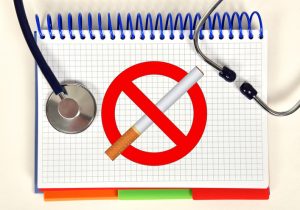
Smoking damages your arteries and blood vessels, increasing the risk of cholesterol plaque buildup. Furthermore, smoking reduces your HDL cholesterol, which is a good kind. HDL cholesterol is necessary because it absorbs LDL ‘bad’ cholesterol and carries it back to the liver where it can be flushed from the body.
The risk of heart disease is two to four times higher among smokers, and the risk is higher if you smoke and have already been diagnosed with high cholesterol. Your risk of heart disease rises tenfold if you are a smoker, have high cholesterol, and have a family history of cardiovascular conditions.
The study highlights the importance of smoking cessation as a means of protecting your heart. Although you may have tried to quit in the past, it’s never too late to try again. There are many different options available to help make your smoking cessation journey a successful one. Speak to your doctor for more information.
Other ways to help lower your cholesterol
What can you do to ensure your blood work looks great for your next physical? In addition to quitting smoking, these three key ways can help you cut your “bad” LDL cholesterol, up your “good” HDL cholesterol, and improve your overall health:
- Get your blood checked
As the Centers for Disease Control and Prevention (CDC) reminds us, high cholesterol can be symptomless – there’s no way to tell how yours measures up. That’s why getting regular blood tests as part of your physicals is important. The test, a lipoprotein profile, measures several kinds of cholesterol and triglycerides. These are the numbers to watch for. Total cholesterol should be less than 200 mg/dL, LDL or “bad” cholesterol should be less than 100 mg/dL, HDL or “good” cholesterol should be 40 mg/dL or higher, and triglycerides should be less than 150 mg/dL.
The National Cholesterol Education Program recommends getting your cholesterol checked every five years, unless your doctor advises otherwise.
- Get your exercise
Regular physical activity can help you maintain a healthy weight, which is a key part of keeping cholesterol levels in the healthy range. The Surgeon General recommends that healthy adults get two-and-a-half-hours of moderate-intensity exercise every week. Start with a short walk in your neighborhood or around the indoor shopping mall. Before you know it, you’ll look forward to the activity and make it a daily habit.
- Eat better
Cutting the cholesterol in your diet is a good way to cut the bad cholesterol in your blood. Avoiding saturated fats (red meat, poultry, full-fat dairy products) and trans fats (look for them in processed foods, crackers, and baked goods) is key, as well as reducing your intake of dietary cholesterol. Fats like monounsaturated fats and polyunsaturated fats (nuts, fish, avocados, vegetable oils, for example) can lower your dangerous blood cholesterol levels because they contain healthy fats.
Eating fiber can also cut your cholesterol levels. The Heart and Stroke Foundation of Canada recommends eating 21 to 38 grams of fiber each day.